Introduction
Engineering graphics is the primary medium for developing and communicating design concepts. Covers the total
field of graphical problem solving and has two major areas of
specialization:Descriptive Geometry, and Documentation Drawings (the focus of this course)
The Design Team
The group of people involved in an
engineering project can range from scientists holding advanced degrees to
drafters who have minimal post secondary education The role of the drafter
will be the focus of this course
The Drafter
Drafters prepare construction
documents and specifications and translate designs into working drawings and
technical illustrations
Working Drawings
Working drawings are visual
instructions for fabricating products and erecting structures in all fields of
engineering
Technical Illustration
Technical illustration is the most
artistic area of engineering design graphics, visually depicts projects and
products for operations manuals and presentations
The Design Process
The design process is a way of
devising innovative solutions to problems that will result in new products or
systems
Product Design

Product design is the creation,
testing, and manufacture of an item that usually will be mass produced, such
as an appliance, tool, or toy
Systems Design

System design combines products and
their components into a unique arrangement and provides a method for their
operation
The Design Process In Use
Design is the process of creating a
product or system to satisfy a set of requirements that has multiple solutions
by using any available resources
Six Steps Of The Process
- The six steps of the design process
are:
Problem
identification
Preliminary ideas
Idea refinement
Analysis
Decision Implementation (our
focus)
Problem Identification
The the following illustrates the
steps to designing a configurable weight bench. The first step is to consider
the most common weight lifting exercises.
Preliminary Idea
These sketches illustrate the
preliminary ideas for the exercise bench
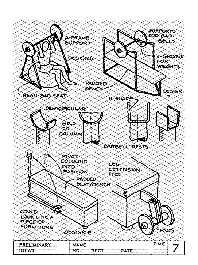 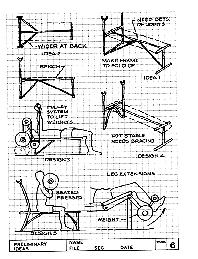
Idea Refinement
These refinement drawings of the
preliminary ideas show the same design drawn to scale and showing a few major
dimensions
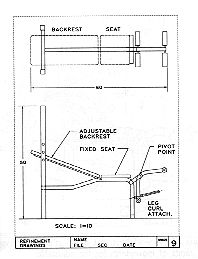 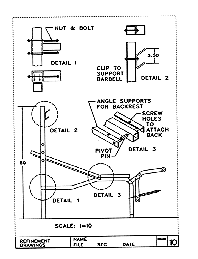
Analysis
Analysis is where the design elements
are compared against the intended use to see if the design will fulfill the
desired function
Decision
This is the point where any design
choice's that need to be made are decided, for example: If there is more than
one design under consideration If there is more than one option to solve a
problem within a single design
Implementation
Implementation is the final step of
the design process. The following slides show the two main types of drawings
used document the final design
Working Drawings
Working drawings are used to fabricate
the individual pieces needed to make the product
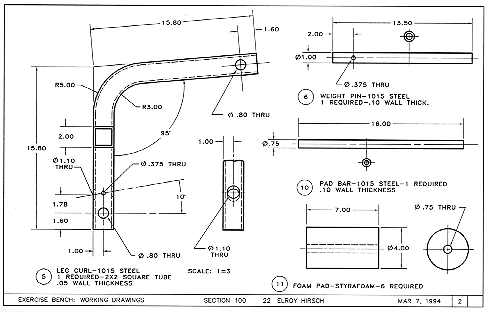
Assembly Drawings
Assembly drawings are used to show how
the parts that make up the whole are put together
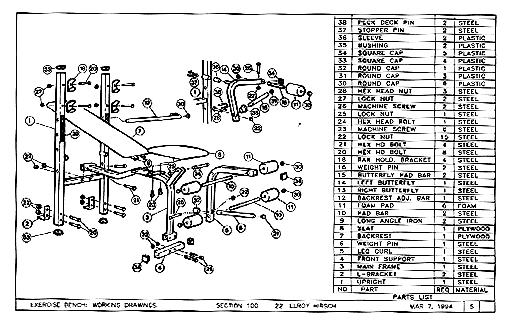
Drawing Instruments
The preparation of technical drawings requires knowledge of and skill in the use of drafting instruments.
Skill and productivity increase with
practice
Even people with little artistic
ability can produce professional technical drawings when they learn to use
drawing instruments properly
Pencils
Pencil grades range from the hardest,
9H, to the softest, 7B 2H is grade of lead that will be used for work in this
course

T-Square & Board
The T-Square and drawing board are
basic pieces of drafting equipment Always tape drawing paper to the board
parallel to the blade of the T-Square
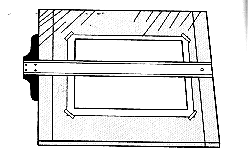
Triangles
The two types of triangles used most
often are the 45º and the 30º-60º triangle
45º Triangle
You may use a 45º triangle to
draw lines at 45º intervals throughout 360
>º
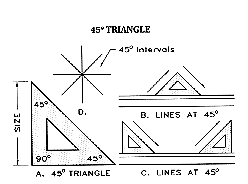
30º-60º
Triangle
30º-60º triangle may be used
to draw lines at 30º intervals throughout 360º
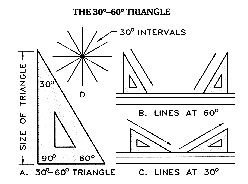
Triangles in Combination
By using a 30º-60º triangle
in combination with a 45º triangle you may draw lines at
15º
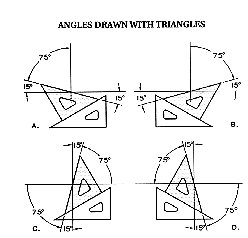
Protractor
When drawing or measuring lines at
angles other than multiples of 15º, a protractor is used
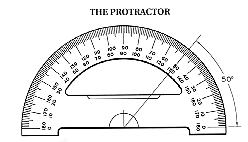
Compass
A compass is used to draw circles To
thicken the pencil line of a circle, draw a series of concentric circles by
adjusting the radius of the circle slightly
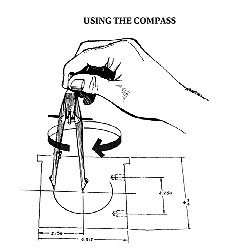
Circle Template
Circle templates are useful for
drawing small circles without a compass
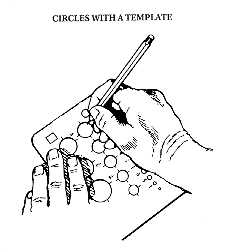
The Alphabet of Lines
The type of line draw depends on the
what the line is representing in the drawing
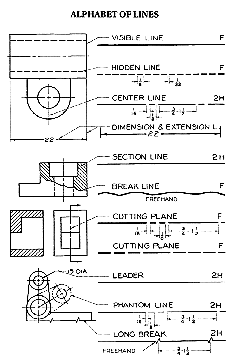
|